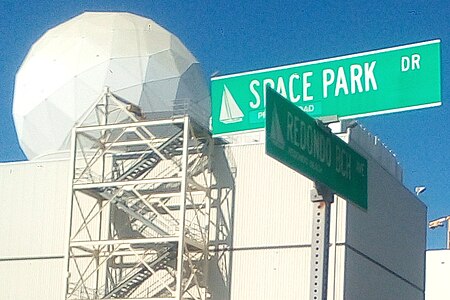Space Park

Space Park is an aerospace engineering campus occupying over 100 acres in Redondo Beach, California since 1961, expanding in 1968 to a nearly adjacent 90 acres in Manhattan Beach (15 of which were developed as public sports facilities between 1987 and 2001; 22 of which were sold in 1996 and became the Manhattan Beach Studios Media Campus). Founded as Space Technology Center by Space Technology Laboratories (STL), the site is now owned and operated by Northrop Grumman Corp. (NGC) since its 2002 acquisition of TRW Inc. This group of buildings became the first in the USA constructed solely for the entire process of designing, building, and testing spacecraft. The architects designed them so every engineer could have a desk with a window view of tree-scaped courtyards. During the 1960 groundbreaking ceremony, STL leaders joined in an ecumenical prayer for the space age: "We dedicate this building then to the protection of our land, to the discovery of our universe, but most of all to the spearheading of Peace on Earth and Good Will to Men."
Excerpt from the Wikipedia article Space Park (License: CC BY-SA 3.0, Authors, Images).Space Park
Space Park Boulevard,
Geographical coordinates (GPS) Address Nearby Places Show on map
Geographical coordinates (GPS)
| Latitude | Longitude |
|---|---|
| N 33.891388888889 ° | E -118.37444444444 ° |
Address
Space Park Boulevard 99
90278
California, United States
Open on Google Maps





